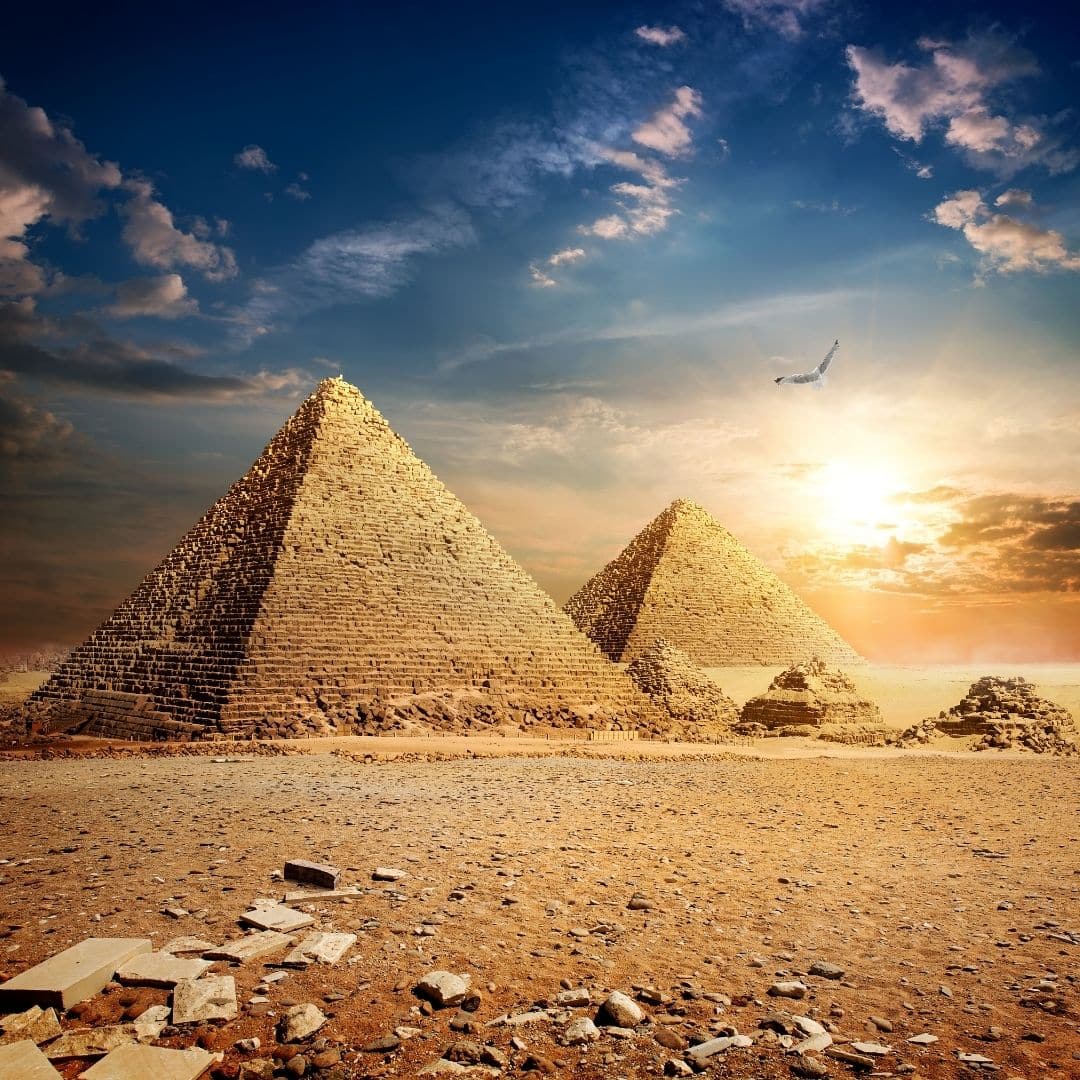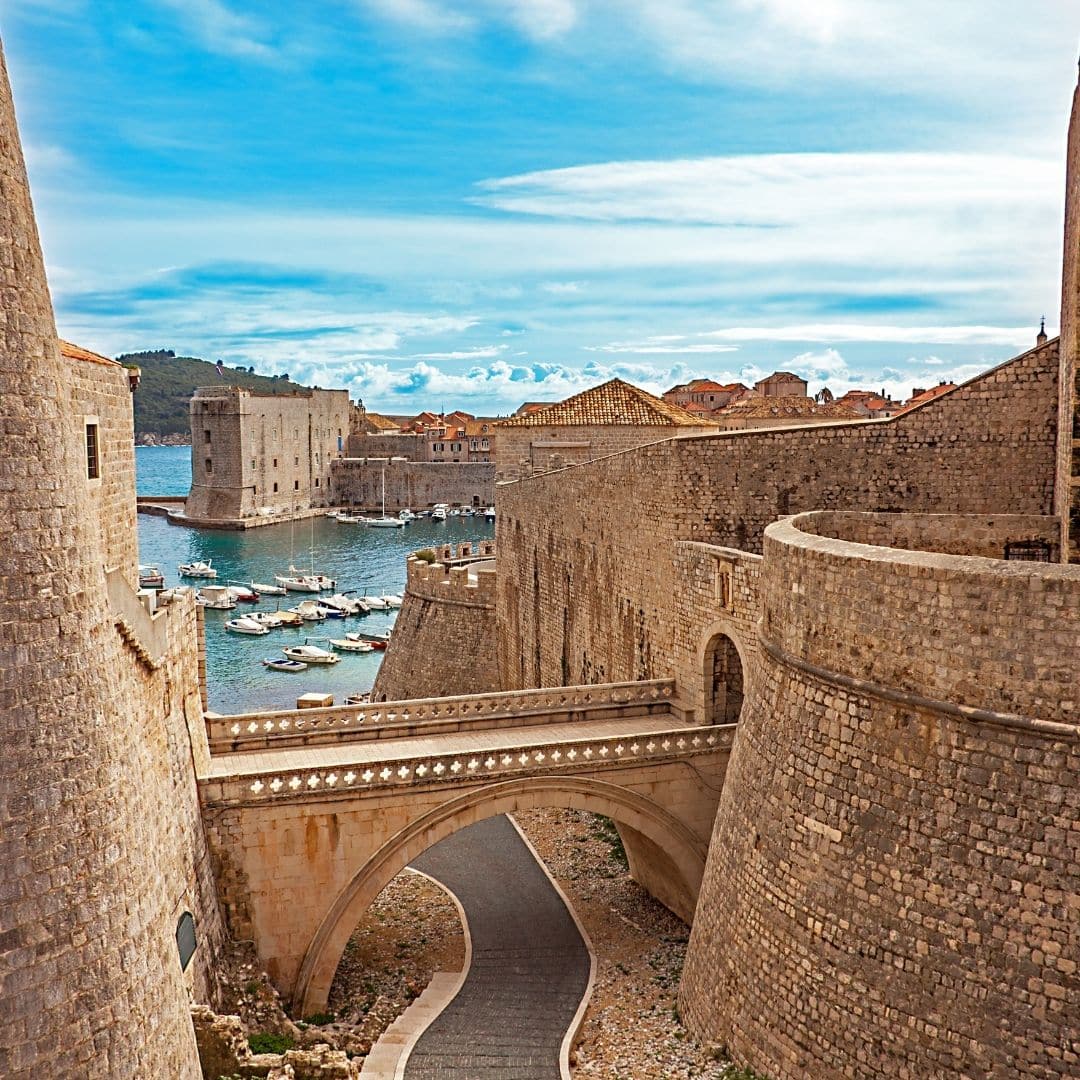The great sphinx of Giza is one of the most iconic images in Egypt.
By Diana Ferreira, online course TREASURES OF ARCHITECTURE | From Egypt to Byzantium
The great sphinx of Giza
A figure of great importance in the funerary complex is the 20 metre high great sphinx of Giza.
Facing east and linked by a monumental pathway to the Pyramid of the Pharaoh Khafre, whose features it resembles.
It is the guardian of the city of the dead rising from the sand and admiring the sunrise.
Made out of stone and the same age as the pyramid of Khufu, it took 23 years to be completed.

Sphinx. Fonte – http://thoth3126.com.br/wp-content/uploads/sites/2/2013/11/esfinge-gizé.jpg
The sphinx is a sculpture of a lying lion with a human head (an idealized portrait of the Pharaoh), symbolizing the power of the King and the Empire.
It wears the typical royal headdress, the nemés, and has on its forehead a uraeus, the royal symbol.
It is currently devoid of its nose, beard and the pigmentation that covered it has faded.
 The nemes, dating from Djoser (after khat) was a funerary headdress that covered the entire head, falling vertically behind the ears and that was tied in a braid that began at the level of the nape. This headdress is represented very often. According to the texts, it would be white with blue bands – or, as we can see from the image, a combination of gold and lapis lazuli.
The nemes, dating from Djoser (after khat) was a funerary headdress that covered the entire head, falling vertically behind the ears and that was tied in a braid that began at the level of the nape. This headdress is represented very often. According to the texts, it would be white with blue bands – or, as we can see from the image, a combination of gold and lapis lazuli.
Usually, the figures of a vulture and a snake – uraeus – as part of the Pharaonic diadem are fixed to the nemes.
The dream of Thutmose IV
Between the forepaws is a granite plaque that tells the dream of Thutmose IV in the 15th century BC.
After have gone hunting gazelles, he leaned against the head of the Sphinx and fell asleep. He claims to have had a  dream in which the Sphinx promised him that if he were to release its body from the sand that covered it, he would be Pharaoh. Although not being of royal blood, the young man decided to carry out the request and the Sphinx also did its part.
dream in which the Sphinx promised him that if he were to release its body from the sand that covered it, he would be Pharaoh. Although not being of royal blood, the young man decided to carry out the request and the Sphinx also did its part.
The funerary complex of Giza
Just like the pyramids, this sculpture is included in all funerary complex and is extremely sophisticated, representing a culture that has been forgotten for centuries and which still has a lot to explain and dazzle with its shapes, details, beliefs, skills and advanced calculations for their remote time.
The pyramids (of the Pharaoh Cheops/Khufu, Chephren/Khafre and Mycerinus/Menkaures) is situated 12 kilometres southwest from the centre of Cairo, and is home to the tombs of the Pharaohs of the Fourth Dynasty of the old Kingdom, respectively grandfather, father and son (descending order of dimensions according to chronology).
Curiosity
Archaeological discoveries in Egypt awakened the curiosity of many relevant figures of the time.
In the image below we can see the French archaeologist Auguste Mariette (seated on the left) and the emperor Pedro II of Brazil (seated at the right) with others in front of the Sphinx, 1871.
 Delie & E. Bechard- De Volta a Luz: Fotografias Nunca Vistas do Imperador. São Paulo: Banco Santos; Rio de Janeiro: Fundação Biblioteca Nacional, 2003
Delie & E. Bechard- De Volta a Luz: Fotografias Nunca Vistas do Imperador. São Paulo: Banco Santos; Rio de Janeiro: Fundação Biblioteca Nacional, 2003
https://en.wikipedia.org/wiki/Great_Sphinx_of_Giza#/media/File:Pedro_II_of_Brazil_in_Egypt_1871.jpg




1 Comment.
Hi, Im following your blog from a long time now and read all the posts back to back when I saw it first timevery nice read!! Thank you!Regards